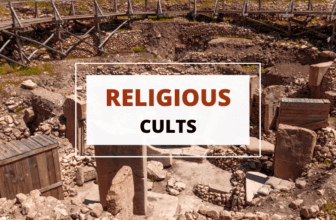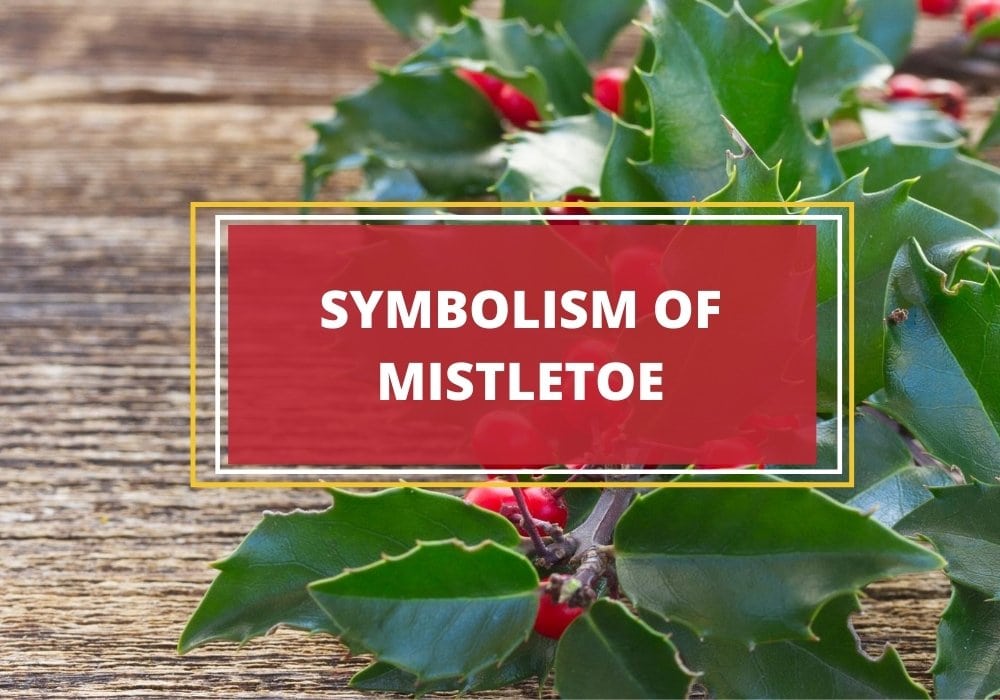
Table of Contents
Under the glittering lights and amidst the symphonies of jingle bells, mistletoe has etched itself as a signature of Christmas lore. This seemingly simple plant, with its waxy leaves and white berries, evokes notions of romance and tradition when strung up in doorways during the festive season. But have you ever stopped to wonder how a semi-parasitic plant became one of Christmas’s most romantic icons?
Origins and Ancient Myths of Mistletoe
Native to Northern Europe and known as Viscum Album, mistletoe is a hemiparasitic plant that grows on branches of trees, particularly hardwood trees like oak and apple. This means it relies on a host tree for certain nutrients but can also produce its own food through photosynthesis.
It sends out roots that penetrate into the tree’s bark, drawing out water and nutrients. Yet, while it might be leeching resources, most mistletoes don’t usually kill their host trees.
Instead, they maintain a delicate balance, ensuring their own survival without severely harming their host. This unique mode of existence is probably one of the reasons it became symbolically important; it thrives without soil, suspended between heaven and earth, and remains green even during winter when most other plants wither away.
Why the Celts Revered Mistletoe
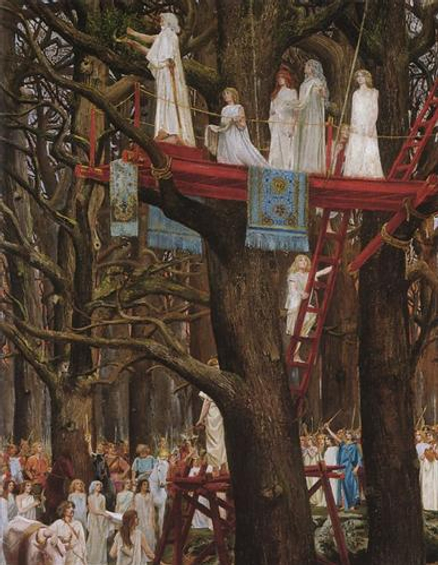
To truly grasp the significance of mistletoe, we must first rewind to ancient Celtic and Druidic traditions. For the Druids, the ancient priests of the Celts, the mistletoe held a sacred significance, especially when it grew on the oak, which they held to be sacred. Roman philosopher Pliny the Elder wrote that the Druids, “Held nothing more sacred than the mistletoe and the tree that bears it.”
Its ability to flourish in the harshest winter, while its host tree stood barren, made it a symbol of endurance and vitality. This resilience, combined with its position elevated off the ground, led the Druids to view it as a physical manifestation of divine essence.
During the winter solstice, in a ceremony known as the Ritual of Oak and Mistletoe, Druid priests would dress in white robes and cut the mistletoe off the oak tree using a golden sickle.
It was crucial that the mistletoe did not touch the ground, for they believed that if this happened, it’s powers would be robbed. Once harvested, they believed its blessings could be used for various purposes, from fertility charms to protection against evil forces.
Mistletoe in Norse Mythology
At the same time, across the continent, mistletoe also held significance in Norse mythology. Mistletoe appears in an important myth involving the death of the god Balder. The beloved god, Balder, was prophesied to die. His mother, the goddess Frigg, in her despair, beseeched all things that grew on Earth to swear an oath not to harm her son.
Everything agreed, swearing never to harm Balder. But she had forgotten to ask this of the humble mistletoe plant, because it did not grow on earth. Loki, the trickster god, fashioned an arrow of mistletoe and had it used to kill Balder. However, the story doesn’t end in tragedy. Balder was resurrected, and the mistletoe, instead of being punished, was given a role of love and benevolence, as commanded by Frigg.
Mistletoe in Roman Mythology
In Virgil’s Aeneid, the mistletoe takes on symbolic significance as a harbinger of good fortune. The Trojan hero, Aeneas, procures a golden bough, often believed to represent mistletoe, as a key to the underworld. This segment, known as ‘The Golden Bough,’ was penned during the Pax Romana, under the auspices of Emperor Augustus Caesar.
From Myth to Superstition
As time progressed, the mystic lore of mistletoe merged with superstitions. The Celts began to hang it in their homes, believing it would bring luck and ward off evil spirits. Its role in fertility made it a favorite decoration at weddings, and the notion of life and rebirth associated with the plant also made it an essential symbol during winter months.
The association of mistletoe with fertility and vitality might explain the tradition of kissing underneath it. In ancient Britain, it was believed that kissing under the mistletoe would enhance one’s fertility. The tradition appears to have first caught on among domestic workers in England and then spread to the middle classes. Over time, this evolved into a general symbol of love, peace, and goodwill.
Mistletoe and the Christmas Connection
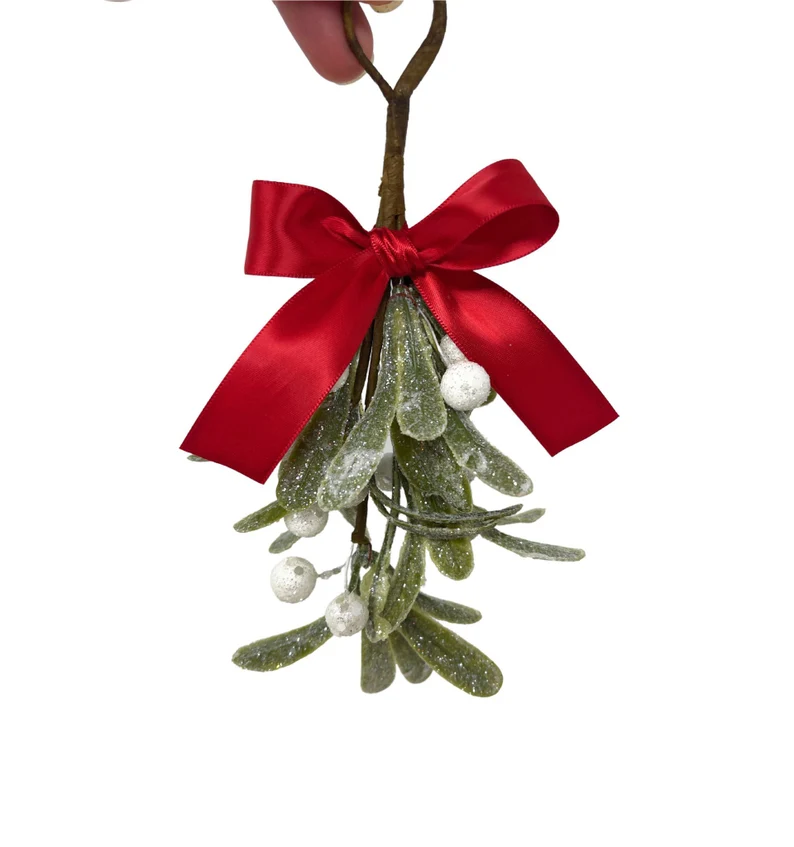
So how did mistletoe find its way into Christmas traditions? As Christianity spread across Europe, many pagan traditions were integrated into Christian customs. Mistletoe’s symbolism of peace and love was easily absorbed into the spirit of Christmas.
There’s even a custom from 18th century England: with each kiss under the mistletoe, a berry would be plucked from the plant, and once all the berries were gone, the kissing magic was considered “used up.”
One of the earliest mentions of the tradition comes from The Pickwick Papers, an 1836 novel by Charles Dickens, where mistletoe is described as bringing luck to two people who kissed underneath it and bad luck to those who didn’t. By the 18th century in Britain, mistletoe had become a significant part of Christmas celebrations.
Yet, even in this adoption, the Church was somewhat ambivalent. The strong ties of mistletoe to pagan rituals made some early Christian leaders wary. As a result, mistletoe is rarely found as a decoration in churches, even though it is abundant in homes during the festive season.
Symbolic Meaning of Mistletoe
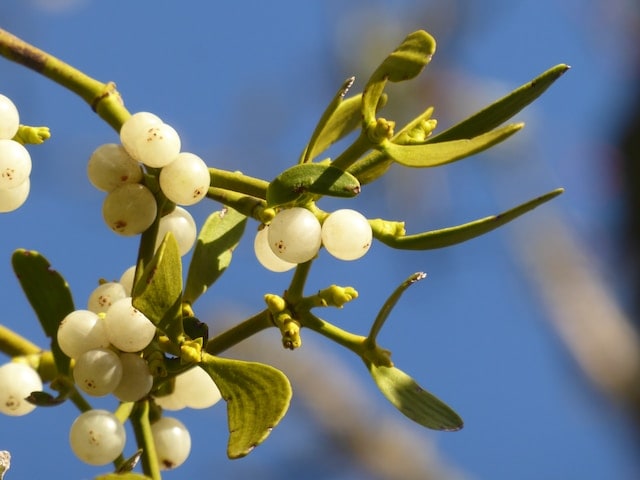
Mistletoe is more than just a Christmas decoration, because it’s significance and symbolism predates Christmas. It’s been linked to many stories and traditions over hundreds of years. Here are some of its symbolism:
1. Love and Romance
The most widely recognized modern association with mistletoe is love, primarily due to the popular tradition of kissing underneath it. This romantic symbolism is frequently portrayed in media. In movies and novels, mistletoe gives couples an opportunity to become intimate, thus reinforcing its association with love and romance.
2. Rebirth and Life
Because mistletoe remains green and bears fruit during winter, while many other plants appear dormant or dead, it’s been seen as a symbol of rebirth and life, representing the persistence of life even during challenging times.
3. Fertility and Virility
In ancient times, the Druids associated mistletoe with fertility because the plant miraculously stayed green and blossomed even during the winter. They also believed it could perform miracles and used it as medicine to encourage fertility. Beyond its association with general fertility, mistletoe’s white berries have sometimes been associated with male virility, leading to its use in certain fertility rituals.
4. Protection from Evil
In Medieval times, mistletoe was hung year-round to ward off evil spirits, ghosts, and witches, and then the old plant was burned after a new one was brought in. Beyond just evil spirits, in certain cultures, mistletoe was believed to protect against witchcraft and general misfortune. Farmers sometimes added mistletoe to their crops to protect against disease.
5. Peace and Reconciliation
In Norse mythology, mistletoe is a symbol of peace and reconciliation. In the Baldur myth, it was decreed that mistletoe would never again be used as a weapon, and from then on would symbolize love and peace.
6. Good Luck
Rooted in various ancient mythologies, including Norse, Greek, and Roman, mistletoe is often viewed as a bearer of good fortune. In France, the tradition of presenting a sprig of mistletoe during the New Year to bring luck for the year ahead is still popular.
7. Healing
Druids harvested mistletoe with great ritual, never allowing the plant to touch the ground. They believed it could cure various ailments, boost fertility, and protect against poison. The plant’s healing properties were so revered that Druids would create elixirs with it to counteract poisons and improve vitality. The Roman naturalist, Pliny the Elder, viewed mistletoe as a cure against poison and epilepsy.
In contemporary times, extracts from certain types of mistletoe have been researched for potential therapeutic properties, especially in complementary cancer treatments. While scientists are still debating how effective it is, its longstanding association with healing makes it a point of interest in modern medicinal research.
Mistletoe Today
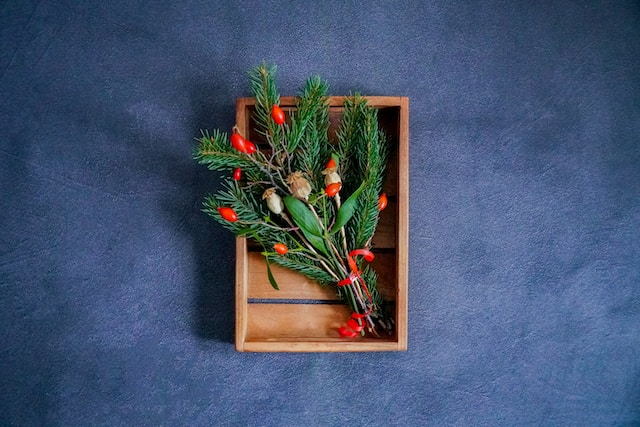
Fast forward to the modern era, and mistletoe’s place in Christmas tradition remains strong, though many are unaware of its rich and varied history. For many, it’s a symbol of romance, an invitation for a cheeky kiss. For others, it’s a nod to old customs and a time of year where love, peace, and benevolence should be at the forefront of our minds.
Mistletoe is regarded the symbolic state flower of Oklahoma, USA, as well as the county flower of Herefordshire, England. The 1st of December has been recognized by the British Parliament as National Mistletoe Day.
The mistletoe motif became popular in Art Nouveau designs throughout Europe, and has also established its place in art, from seasonal Christmas and New Year decorations to non-seasonal pieces, such as vases, lamps, and dinnerware.
In jewelry design, mistletoe is often featured on earrings, necklaces, brooches, bracelets, and rings. Some are fashioned in gold or silver, where freshwater pearls are depicted as white berries. Other designs depict leaves made of emerald stones, green glass, Paua shell, mother of pearl, or polymer clay. Mistletoe designs makes for gorgeous hair decorations, especially in clips and combs.
In Brief
Mistletoe as a symbol of love, fertility, and good luck dates back thousands of years, but it continues to be significant in modern times. In fact, many still hold to the tradition of hanging the mysterious bough during Christmas to bring good luck, romance and to ward off evil.
So the next time you find yourself under a sprig of mistletoe, remember, you’re partaking in a tradition that has roots deeper and more enchanting than you might have ever imagined. And whether you lean in for a kiss or simply admire the plant’s resilience, let it be a reminder of the age-old spirit of love, peace, and rebirth.
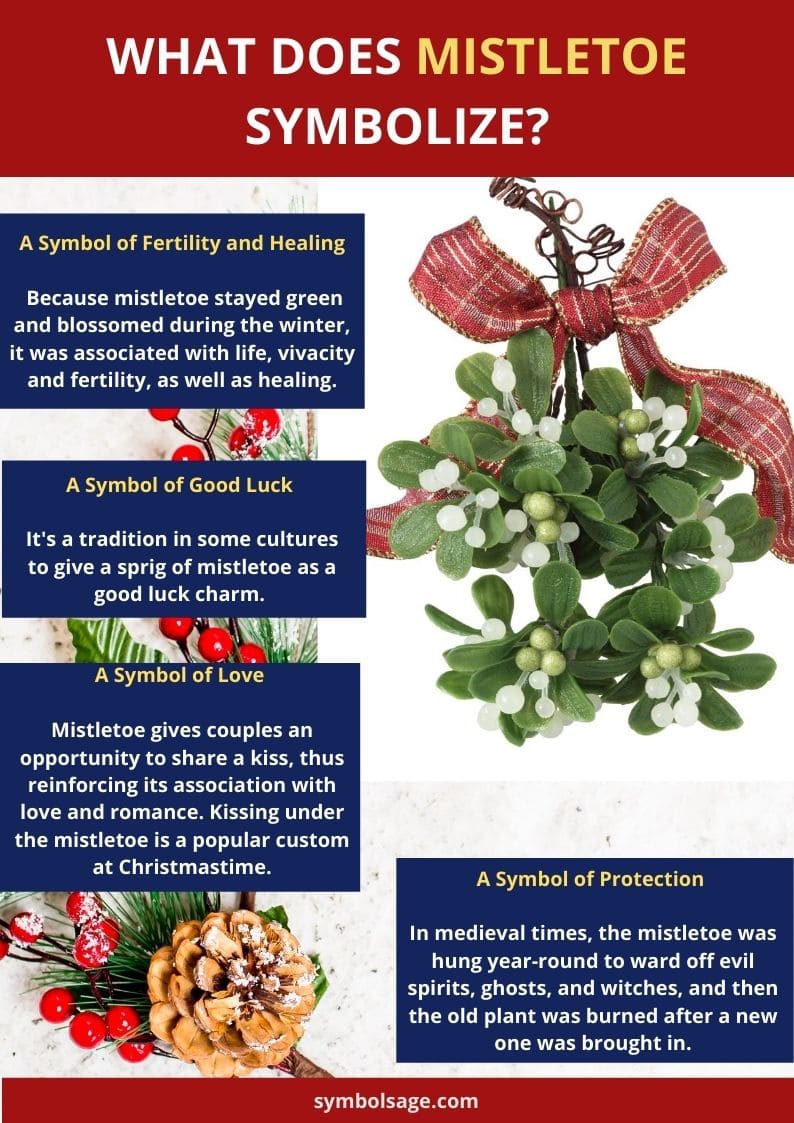
Related articles
15 Meaningful Symbols of Christmas and What They Mean
10 Christmas Traditions with a German Twist
Christmas Traditions from Around the World – A List
Yule Festival: Winter’s Cozy Tapestry of Traditions
Winter Symbols and Symbolism to Celebrate the Cold Season
Biblical Angels: Their Roles and Significance in Christianity






